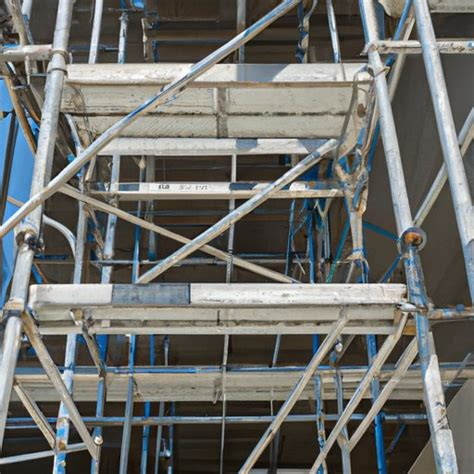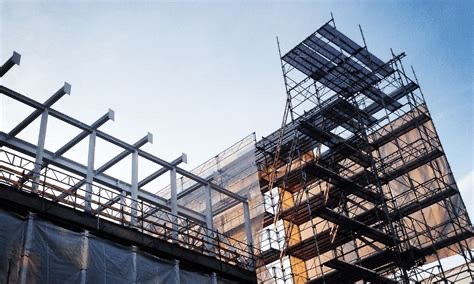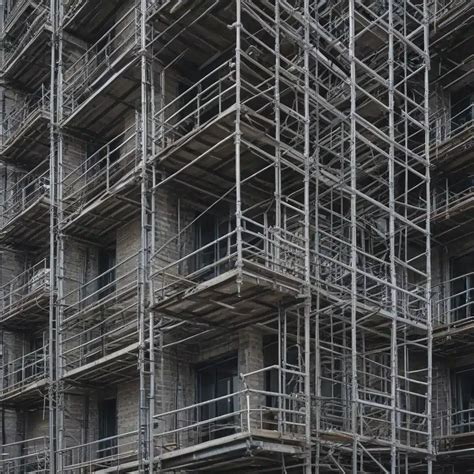Content Menu
● Introduction to Aluminum Plank Scaffolds
● Advantages of Aluminum Plank Scaffolds
● Regular Inspections
● Inspection Checklist
● Cleaning and Debris Removal
● Cleaning Techniques
● Proper Storage and Handling
● Storage Tips
● Routine Maintenance and Repairs
● Maintenance Practices
● Training and Documentation
● Training Topics
● Conclusion
● FAQ
>> 1. What are the benefits of using aluminum plank scaffolds?
>> 2. How often should I inspect my aluminum plank scaffolds?
>> 3. What cleaning methods are recommended for aluminum plank scaffolds?
>> 4. How should I store aluminum plank scaffolds when not in use?
>> 5. Why is training important for scaffold maintenance?
● Citations:
Proper maintenance of an aluminum plank scaffold is crucial for ensuring the safety and longevity of the scaffolding system. Aluminum planks are widely used in construction due to their durability, lightweight nature, and resistance to corrosion. However, like any other material, they require regular care to maintain their structural integrity and performance. In this article, we will delve into the best practices for maintaining aluminum plank scaffolds, including regular inspections, cleaning, storage, and repair techniques.

Introduction to Aluminum Plank Scaffolds
Aluminum plank scaffolds are a popular choice for construction projects due to their strength, durability, and ease of assembly. They are made from aluminum alloys, which provide excellent resistance to corrosion and can withstand various environmental conditions. These planks are lighter than steel or wood, making them easier to transport and install, which is particularly beneficial for projects requiring frequent scaffold reconfiguration.
Advantages of Aluminum Plank Scaffolds
- Lightweight: Easy to handle and transport, reducing labor costs.
- Corrosion Resistance: Aluminum does not rust, extending the lifespan of the scaffolding.
- Durability: Can withstand heavy loads and harsh weather conditions.
- Easy Assembly: Quick to set up and dismantle, ideal for projects with tight deadlines.
Regular Inspections
Regular inspections are the cornerstone of maintaining aluminum plank scaffolds. These inspections should be conducted by a competent person before each work shift and after any incident that could affect the scaffold's integrity, such as extreme weather events or near-miss accidents.
Inspection Checklist
1. Surface Condition: Check for any signs of damage, such as dents, cracks, or bent edges.
2. Load Capacity: Verify that the planks comply with OSHA requirements for rated loads.
3. Structural Integrity: Inspect for any signs of wear or damage that could compromise the plank's structural integrity.
4. Connections: Ensure that all connections, such as hooks or brackets, are securely fastened and free from rust or damage.

Cleaning and Debris Removal
Cleaning is essential to prevent corrosion and maintain the aluminum plank scaffold's durability. Regular cleaning helps remove dirt, debris, and contaminants that could weaken the structure over time.
Cleaning Techniques
1. Mild Detergent Solution: Use a soft brush and a mild detergent solution to gently clean the surface without causing scratches.
2. Rust Removal: If rust is present on metal components, remove it carefully using a wire brush, then apply rust-proof paint or lubricant.
3. Air-Drying: Allow planks to air-dry completely after cleaning to prevent moisture accumulation.
Proper Storage and Handling
Proper storage and handling practices are crucial for extending the lifespan of aluminum plank scaffolds.
Storage Tips
1. Dry Storage: Store planks in a dry, covered area to protect them from moisture and direct sunlight.
2. Horizontal Stacking: Stack planks horizontally to prevent warping or bending.
3. Organized Storage: Keep planks organized and easily accessible to facilitate quick assembly and disassembly.
Routine Maintenance and Repairs
Proactive maintenance and prompt repairs are vital for maintaining the integrity of aluminum plank scaffolds.
Maintenance Practices
1. Surface Treatment: Apply a protective coating or anti-corrosion spray to enhance longevity.
2. Repairing Minor Damage: Use epoxy resin to fix small cracks or dents, but replace planks with significant damage.
3. Tightening Connections: Regularly inspect and tighten any loose connections to ensure stability.
Training and Documentation
Providing regular training for workers on scaffold inspection and maintenance procedures is essential. This includes understanding safety protocols, proper assembly and disassembly techniques, and recognizing potential hazards.
Training Topics
- Safety Protocols: Ensure all personnel are familiar with safety guidelines and best practices.
- Assembly and Disassembly: Train workers on correct setup and teardown procedures.
- Load Limits: Educate workers on weight capacity and even load distribution.
Conclusion
Maintaining aluminum plank scaffolds requires a comprehensive approach that includes regular inspections, thorough cleaning, proper storage, and timely repairs. By following these best practices, construction companies can ensure a safe working environment, extend the lifespan of their scaffolding equipment, and reduce maintenance costs. Proper maintenance is not only a regulatory requirement but also a key factor in the success of construction projects.

FAQ
1. What are the benefits of using aluminum plank scaffolds?
Aluminum plank scaffolds offer several benefits, including being lightweight, corrosion-resistant, durable, and easy to assemble. These features make them ideal for a wide range of construction projects.
2. How often should I inspect my aluminum plank scaffolds?
Inspections should be conducted regularly, ideally before each work shift and after any incident that could affect the scaffold's integrity. This ensures that any potential hazards are identified and addressed promptly.
3. What cleaning methods are recommended for aluminum plank scaffolds?
Use a mild detergent solution and a soft brush to clean the planks. Avoid harsh chemicals or abrasive cleaners that could damage the surface. Always air-dry the planks after cleaning to prevent moisture accumulation.
4. How should I store aluminum plank scaffolds when not in use?
Store planks in a dry, covered area, away from direct sunlight and moisture. Stack them horizontally to prevent warping and ensure they are easily accessible for future use.
5. Why is training important for scaffold maintenance?
Training is crucial because it ensures that workers understand safety protocols, proper assembly and disassembly techniques, and how to identify potential hazards. This knowledge helps prevent accidents and extends the lifespan of the scaffolding equipment.
Citations:
[1] https://mccausey.com/scaffold-plank-maintenance-best-practices/
[2] https://scaffoldingrentalandsales.com/blog/scaffold-maintenance-tips-and-tricks-for-safe-and-efficient-operations/
[3] https://www.tytruss.com/newsclass_2/Durability-Longevity-Scaffolding-Aluminum-Planks.shtml
[4] https://apacsafety.com/scaffold-planks-guide/
[5] https://scaffoldingrentalandsales.com/blog/how-to-properly-maintain-your-scaffolding-equipment/
[6] https://www.tp-scaffold.com/amp/why-choose-a-20-aluminum-plank-for-scaffolding.html
[7] https://scaffoldingrentalandsales.com/blog/the-aluminum-walk-board-vs-traditional-boards/
[8] https://www.badgerladder.com/scaffold-plank/
[9] https://adtomall.com/how-to-maintain-and-repair-the-scaffolding-metal-plank
[10] https://www.osha.gov/etools/scaffolding/planking
[11] https://aaitscaffold.com/blog/essential-scaffolding-maintenance-tips-for-a-safer-workplace/
[12] https://www.wernerco.com/us/products/scaffold-platforms/planks/PA200Series/PA206
[13] https://www.shutterstock.com/search/scaffolding-planks
[14] https://www.kaercher.com/int/professional/know-how/cleaning-scaffolding.html
[15] https://www.wernerco.com/us/products/scaffold-platforms/planks/PA200Series/PA208
[16] https://www.tp-scaffold.com/what-maintenance-is-required-for-aluminum-plank-decking.html
[17] https://www.eng-tips.com/threads/question-on-scaffold-grade-planks-and-load-rating.242521/
[18] https://www.finehomebuilding.com/forum/scaffolding-planks
[19] https://supremepipe.com/blog/scaffolding-maintenance-tips/
[20] https://industrialladder.com/stages-planks/
[21] https://www.saiaonline.org/files/Plank%20&%20Platform%20Inspection%20Guidelines.pdf
[22] https://www.youtube.com/watch?v=SidMMFpkBz8






















